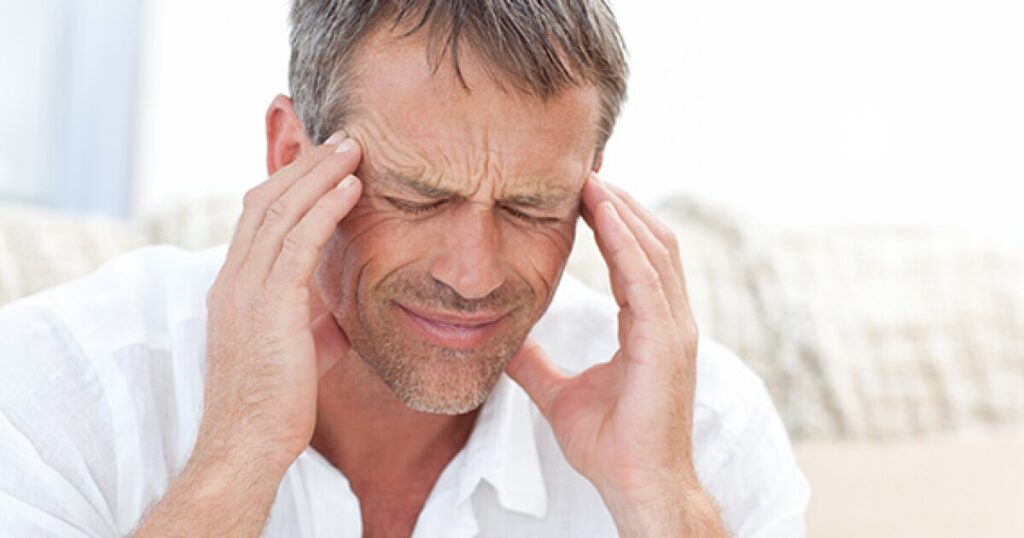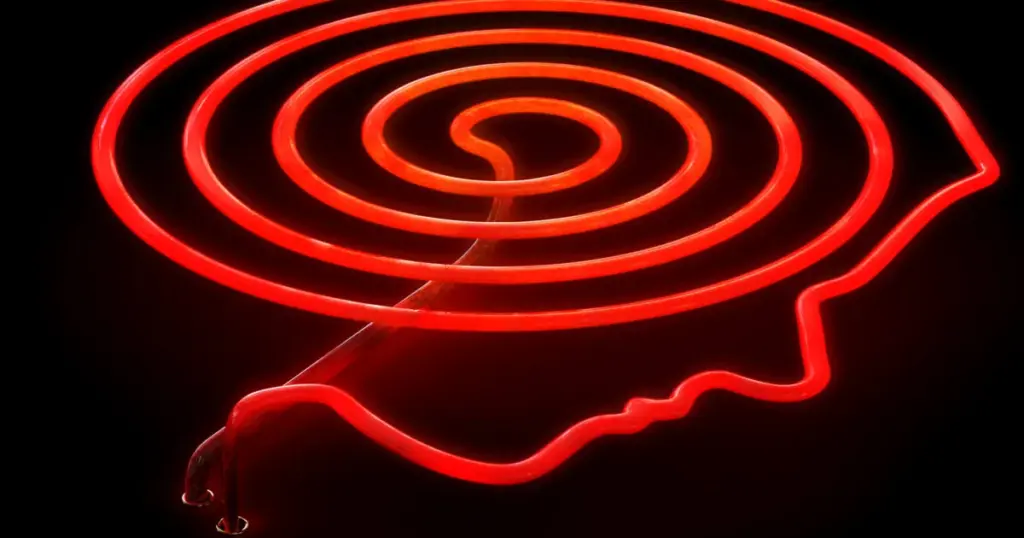There is much more to migraine pain than just a nasty headache. This neurological condition can leave you bedridden for days with excruciating throbbing pain. It can be frightening to learn about migraines. To help you understand more about this disease, let us review the facts, the questions, and the answers.
What is Migraine?
A migraine is a headache that often affects one side of the head and can cause excruciating throbbing pain or a pulsating sensation. Severe light and sound sensitivity, nausea, and vomiting are frequently present. Your everyday activities may be hindered by the excruciating agony of a migraine episode, which can linger for hours or even days. Lights, noises, smells, or physical exertion will probably make your migraine pain worse. It might go on for days or at least four hours.

Chronic, recurrent headaches that feel like a vice around your head are called migraines. These visual and sensory problems, which can last anywhere from five to sixty minutes, include partial vision loss, seeing zigzag lines, and flickering lights or dots. Migraine pain might last up to 72 hours if left untreated. Depending on the person, frequency can occur seldom or a few times per month. Although the exact causes are unknown, heredity and environmental factors are significant contributors. Let’s know about the different kinds of migraine pain.
Types of Migraine Pain
Although there are many kinds of migraine pain, there are a few to name which are widely diagnosed among people. They are:
1. Brainstream Aura Migraine
Before the headache, one may experience dizziness, confusion, or lack of balance. The back of your head could be affected by the ache. In most cases, migraineurs who suffer brainstem aura symptoms see a gradual onset of their migraine with or without a classic migraine headache. Approximately 10% of individuals who experience migraine with a conventional visual aura also experience brainstem aura.
2. Menstrual Migraine
This is when the headache and your menstruation are related. These often begin two days prior to the onset of your menstruation and continue for three days following. The migraine associated with menstruation typically has no aura, although you may experience different types of migraine headaches at various times of the month. A dull throbbing or intense pulsating headache, light sensitivity, nausea, exhaustion, dizziness, and other symptoms are common.
3. Silent Migraine
Also known as acephalgic migraines, these are different from regular migraine pain. Rather, additional symptoms include light and sound sensitivity, nausea, dizziness, and aura (visual abnormalities). Actually, the primary warning indicator for this kind of migraine is typically aura. However, you might also experience additional symptoms including nausea. Since silent migraines lack the typical symptoms, diagnosing them can be challenging. They can still be extremely uncomfortable and disruptive, though.
4. Ocular Migraine
It is sometimes referred to as a retinal or ophthalmic migraine. A dull aching behind the eye that may spread to the rest of your head is the side effect, along with a transient, partial, or complete loss of vision in one eye. Although it’s uncommon, those who experience these kinds of migraine pain may be more susceptible to irreversible vision loss in one eye. Even if your ocular migraine goes away on its own, it’s a good idea to discuss your symptoms with your physician.
5. Status Migraine
Due to the continuous vomiting and agony, you run the danger of dehydration and sleep disturbances because the condition lasts for at least three days. This type of migraine pain doesn’t respond to usual treatment. It can be brought on by nausea, vomiting, or the sensation of flashing lights or aura. It even causes difficulty with thought. Starting treatment as soon as a migraine episode appears is the greatest method to lower the likelihood that it may progress. Your chances of stopping your attack in its tracks or keeping it from getting out of control increase the sooner you take action.
6. Chronic Migraine
It is defined as having a migraine at least 15 days out of the month. Both the symptoms and the level of pain can fluctuate often. Experts classify chronic migraine as a severely disabling condition, meaning it prevents you from accomplishing certain tasks because headaches are disruptive and this condition makes them happen frequently. This migraine pain might vary depending on a number of factors, including treatment efficacy, triggers, personal circumstances, and family history.

Migraine Triggers
- Stress: For many migraine sufferers, emotional stress—which includes tension, anxiety, and even excitement—is a major trigger.
- Hormonal Changes: Certain people are more susceptible to migraines due to hormonal shifts, which can happen during the menstrual cycle, pregnancy, or menopause.
- Sleep Patterns: Migraines can be brought on by either too much or too little sleep. For some people, sticking to a regular sleep routine is crucial.
- Sensory Stimuli: Loud noises and intense, continuous visual stimulation, like those found in video games or fast screen scrolling, can act as triggers.
- Medication: As a side effect, certain drugs may cause migraines.
- Hormonal Medications: Hormone replacement treatment and birth control pills can have an impact on people and cause migraines.
- Caffeine: Excessive caffeine intake can also cause migraines, even if withdrawal from caffeine might affect certain people.
- Alcohol and Dehydration: Due to its dehydrating properties, alcohol can cause migraines in people.
- Allergies: In certain people, allergic responses or sinus problems can cause headaches.
- Environmental Factors: Migraines can be brought on by a strong or flickering light exposure, such as that found in fluorescent or daylight environments. Strong scents, such as those of cigarettes, perfumes, or chemicals, might cause migraine pain. Certain persons are susceptible to migraines due to rapid changes in weather, extreme humidity, and alterations in barometric pressure.
- Dietary Factors: For certain people, missing meals might result in low blood sugar, which can cause migraines. Aged cheeses, processed meals, caffeine, and artificial sweeteners like aspartame are common causes of migraine symptoms. Certain persons have sensitivity to nitrates or monosodium glutamate (MSG), which are additives present in processed meals.

5 Quick Treatments for Migraine Pain
On its own, migraines cannot be healed at home. It is unquestionably in need of medical attention and medication. However, you don’t need to visit the doctor to relieve the migraine pain—there are a number of easy things you may do. Take a look at these suggestions and feel better quickly:
- Try a Cold Pack – Apply a cold pack to your forehead if you’re experiencing a migraine. A bag of frozen veggies, some ice cubes covered in a towel, or even a cold shower could help reduce the discomfort. After 15 minutes of wearing the compress on your head, take a 15-minute rest.
- Lower the Lighting – Migraine headaches can be brought on by bright or flickering light, even from your computer screen. Use blackout curtains to cover your windows throughout the day if you are prone to them. When outside, wear sunglasses. Additionally, you might utilize daylight-spectrum fluorescent bulbs in your light fixtures and add anti-glare displays to your computer.
- Have a Caffeinated Beverage – Caffeine by itself, in small doses, helps reduce migraine pain in its early stages. Additionally, caffeine may strengthen the analgesic and acetaminophen (Tylenol, etc.) effects on migraine pain. Take caution, though. Excessive caffeine consumption can eventually cause headaches associated with withdrawal. Additionally, consuming caffeine too late in the day may disrupt sleep, which may worsen migraines.
- Manage Stress – Migraines and stress frequently coexist. Avoid attempting to cram more tasks or activities into your day. Rather, figure out how to exclude certain details. A quick walk or some gentle stretches will help you reenergize for the task at hand if you’re feeling overwhelmed. Make time each day to spend at least fifteen minutes doing something you enjoy.
- Stay Hydrated – Dehydration can also cause migraines, just like it can in some other physical conditions. Thus, drinking lots of water is a straightforward but efficient method of lessening or preventing a migraine episode. It relieves headaches.

Other methods might also include making a migraine diary; Every time you experience a headache, record it. Migraine sufferers appear to benefit from meditation, breathing exercises, relaxation, and even mental health therapies. Determine whether there is a trend or whether a certain factor sets off a migraine. Applying pressure on particular body parts is known as acupressure. This type of targeted point stimulation is thought to help reduce migraine pain and release tense muscles in the body. Future migraine attacks may be avoided by altering one’s diet or eating habits to eliminate triggers.
Ignoring treatment may probably make your migraine worse and make you suffer for longer. For this reason, it is suggested to seek medical advice.

